Know the party
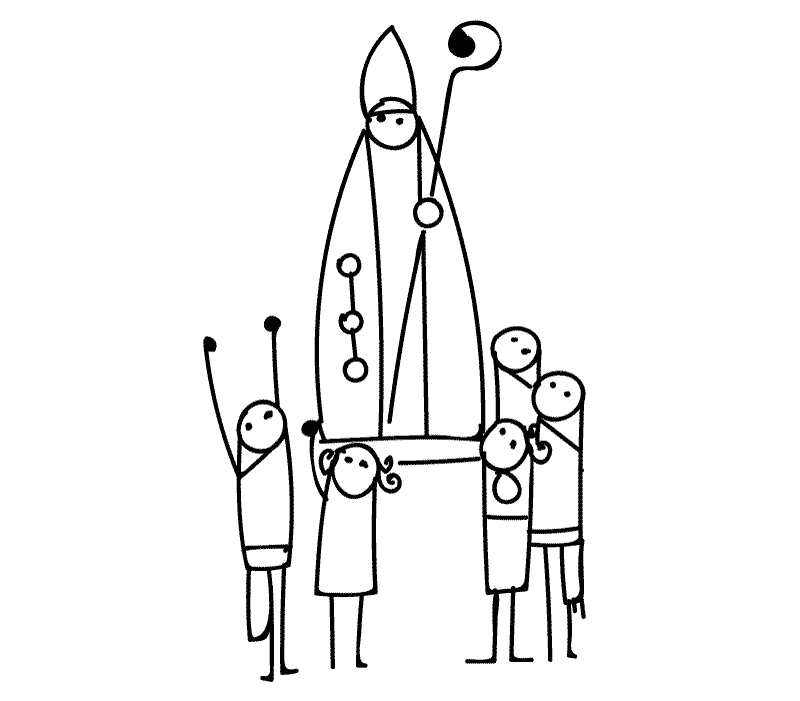
Who was San Fermin
From 6 to 14 July, Pamplona dresses up in red and white to celebrate 9 days of fiesta dedicated to San Fermin, who has been the co-patron saint of Navarre along with San Francisco Javier since 1657.
Legend has it that Fermin was the son of Firmus, a senator of the Roman city of Pompaelo, nowadays Pamplona. Firmus entrusted his son’s education to a Christian priest, Honestus, who converted the entire family to Christianity. Fermin then went to France to convert the Gauls and at the age of 24 was consecrated as a bishop in Toulouse (France).
On his travels through Aquitaine, Auvergne, Anjou and Amiens, he worked a number of miracles: he cured a blind man and healed leprosy and paralysis and also lifted curses. The Roman governor, Sebastian, in an attempt to restore faith in the cults of Jupiter and Mercury, ordered Fermin to be imprisoned and finally beheaded with a sword on 25th September. In memory of his martyrdom the citizens of Pamplona wear red handkerchiefs around their necks during the festival.
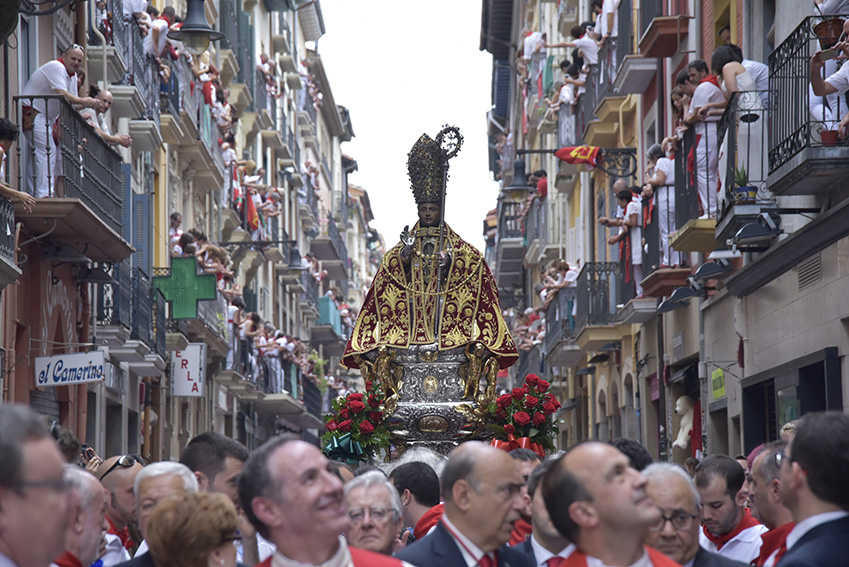
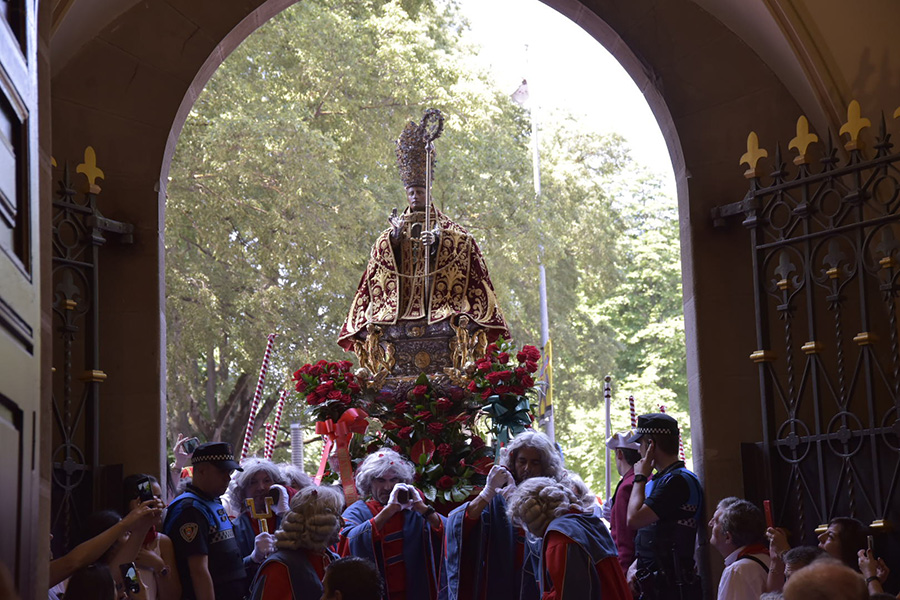
According to legend the remains of San Fermin lie in Amiens cathedral and he was not worshipped in Pamplona until the 12th century. Pilgrims who came from Amiens through the Way of Sain James, brought the news that a saint from Pamplona was venerated in their city. A number of relics were sent to Pamplona, the most famous of which were brought by bishop Pedro de Paris and they are still preserved in the Cathedral of Pamplona and in the image of the Saint of the church of San Lorenzo.
Origin of the party
A fiesta with almost 1,000 years of history
In the Middle Ages a fair was already being held on 10th October to celebrate the arrival of San Fermin in Amiens, with religious ceremonies to honour the Saint, which were followed by a mass meal for the poor of the city. Other events were gradually added to the fiesta such as comedies, music, troubadours, drummers and dances during the procession. The fiesta we know today started to take shape in the 16th century.
In 1591, the City Government, transferred the celebrations to 7th July to avoid the bad weather in autumn, which coincided with a secular trade fair on the same date that attracted a large number of traders and buyers, along with organised bull fights.
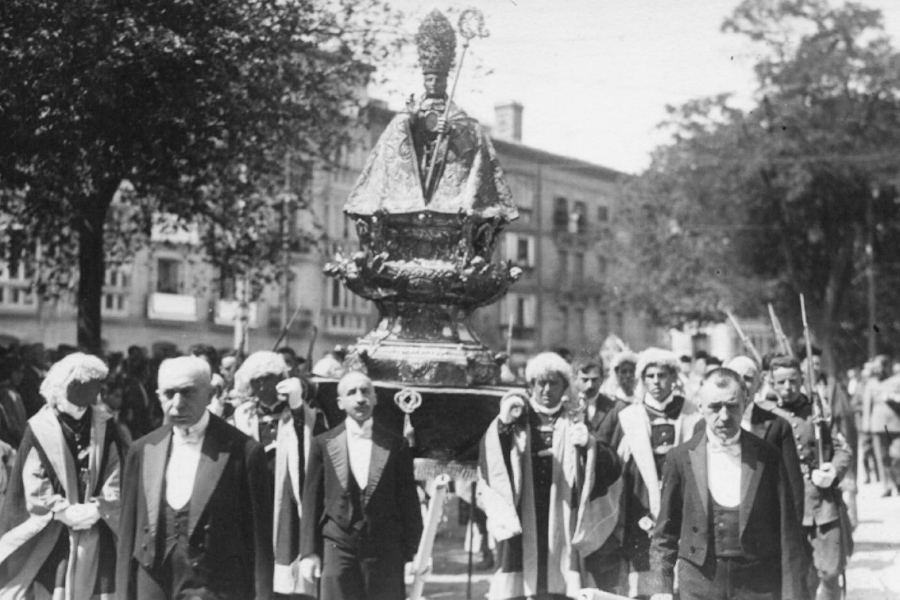
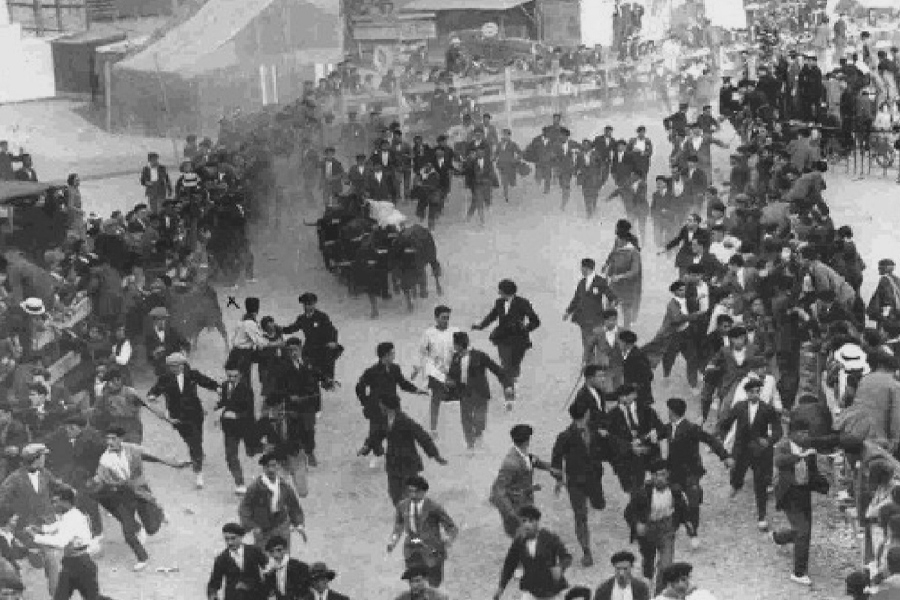
In the 20th century, developments in the media, transport and tourism began to create a massive influx of people arriving at Pamplona to take part in the fiestas. The American writer Ernest Hemingway, winner of the Nobel Prize for Literature in 1954, played a major part in popularising the fiesta by using it as the setting for his novel ‘The Sun Also Rises’ (‘Fiesta’) in 1924.
And since then, our festival, internationally known, has not stopped growing and attracting people from the most remote places who arrived amazed with the idea they have and leave surprised and in love with what they could not even imagine they would live in our city.
White and red
According to the legend, the Saint was beheaded, and for this reason a red neckerchief is worn around the neck during the nine days of the festival.
The tradition in the Sanfermines is to dress up as a pamplonica, with a white shirt, trousers or skirt, and the red sash and neckerchief. During the fiesta almost everyone wears the fiesta ‘uniform’, creating beautiful images of red and white. No one knows exactly why this style of dress was chosen, or who thought it up, but what is undeniable is that it brings everyone together during the fiesta. The simplicity of the clothing means that both locals and people from outside the city wear it, to create human waves of red and white, the two colours that characterise the fiestas of San Fermin.
The origins of the “outfit” of the pamplonica are unclear. There are several theories that attempt to explain this popular custom, which has become part of the fiesta over time. Its often commented that the members of the peña La Veleta were its creators. This peña was founded in 1931 by people of humble origins, mostly working class, who were looking for a kind of uniform that would identify them and at the same time serve to distinguish them from other associations.
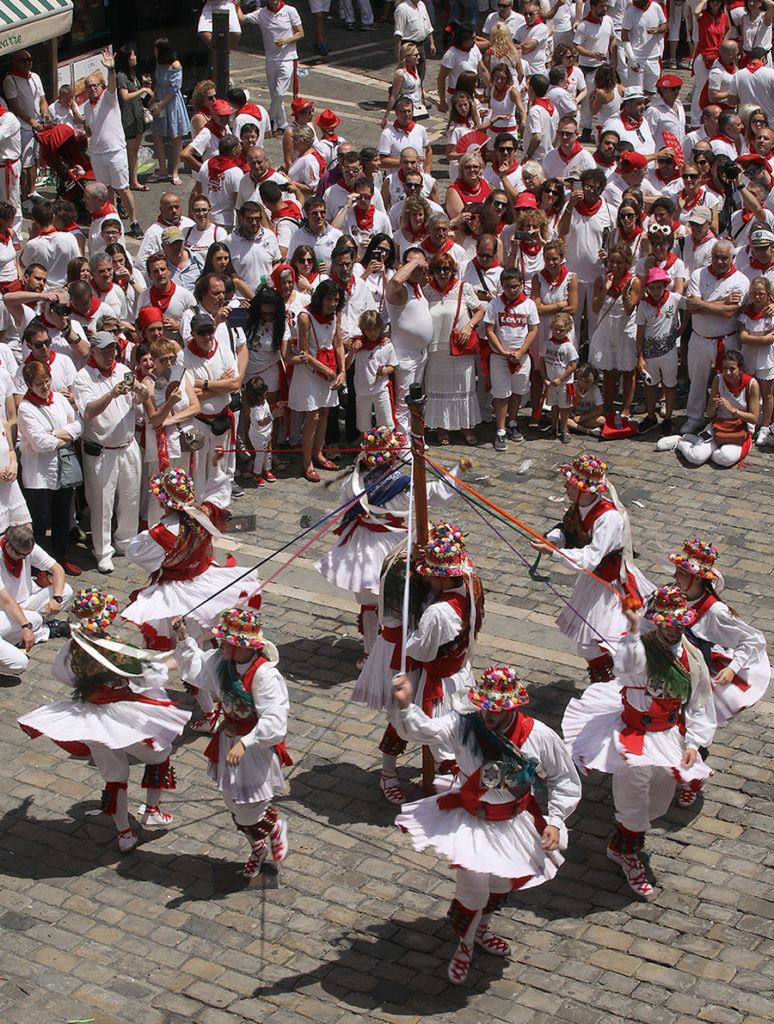
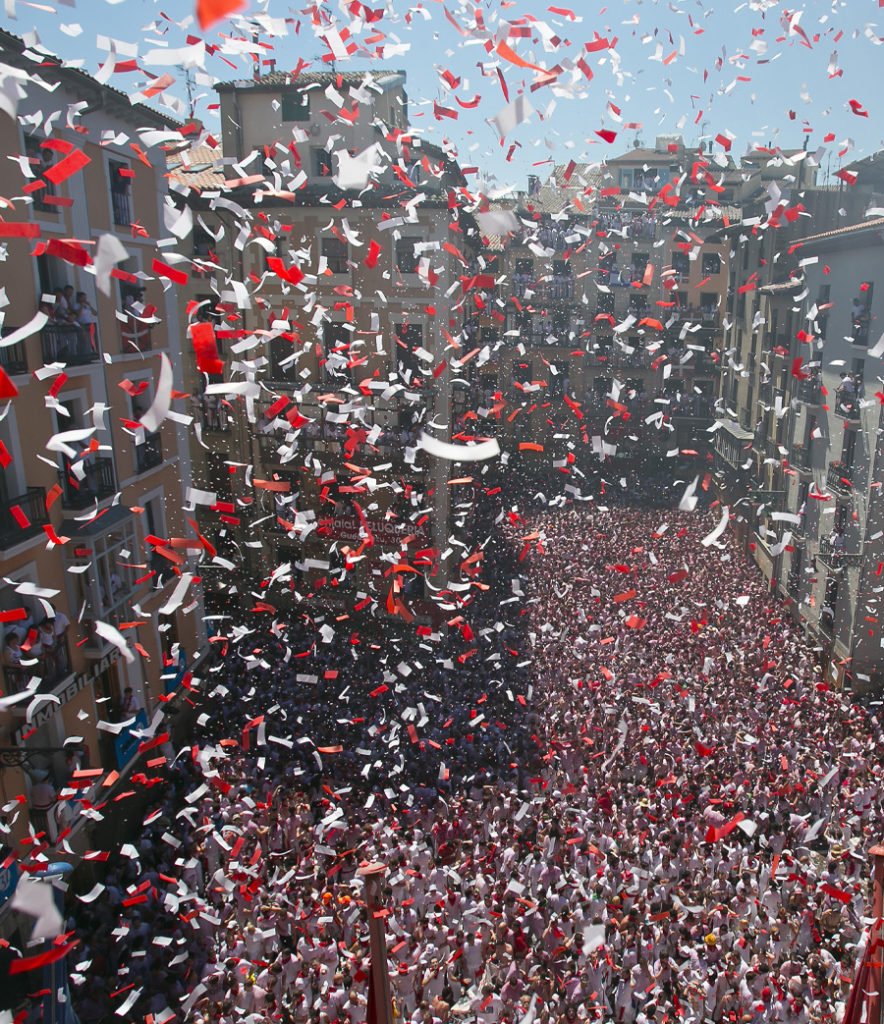
White clothing was quite easy to find and was also very easy on any wallet. On the other hand, it fulfilled the objective of standing out, since it is undoubtedly a very showy color, which, together with the red, made it even more striking. This may therefore be the reason why the use of these colours become more and more popular and extended to other participants in the fiesta.
The red neckerchief is an essential item if you really want to get into the ambience of the fiestas. The tradition states that you tie the neckerchief to your neck right after the chupinazo commences the fiestas, and there it stays until the ‘Pobre de mi’ that is the farewell after the final celebration of the Sanfermines.
No one can agree on its meaning and symbolism and several different explanations exist. Tradition once again declares that the red of the neckerchief is a reminder of the martyrdom of San Fermin, who was beheaded in the city of Amiens, during the persecutions of the 3rd century. The red would symbolize the blood of the saint.
Hemingway
The fiestas in honor of San Fermín were a domestic celebration until 1923 when a young Hemingway arrived in Pamplona. Three years later he published his first successful novel ‘The sun also rises’ (`Fiesta’), a book that turned the sanfermines into one of the most famous events in the world.
‘Fiesta’ tells the story of a group of American and British people who wander aimlessly through France and Spain, members of the lost generation in the period following the First World War. This book turned Hemingway one of the leading writers of his time. The success of the novel even led to1957 it being made into a film by Henry King.
Ernest Hemingway (Illinois, 1899 – Idaho, 1961) arrived in Pamplona on 6th July 1923, accompanied by his first wife, Hadley Richardson. His passionate and brave character led him to participate in the fiestas of San Fermin just like any other local: he run before the bulls, he made friends with toreros, such as Antonio Ora: Inez, and other Spaniards such as Juanito Quintana, he ate, drank and danced with the people of the city, and felt the intense joy and euphoria of the fiesta.
The American writer was so fascinated by the traditions of the Navarrese capital that his presence was a constant in the twenties and after the Spanish Civil War parenthesis, in which he actively participated in favor of the Spanish Republic, and the Second World War, he returned on two new occasions, 1953 and 1959, reaching a total of 9 Sanfermines. Between these two years, Ernest Hemingway received the Pulitzer Prize in 1953 and a year later was given the Nobel Prize for Literature.

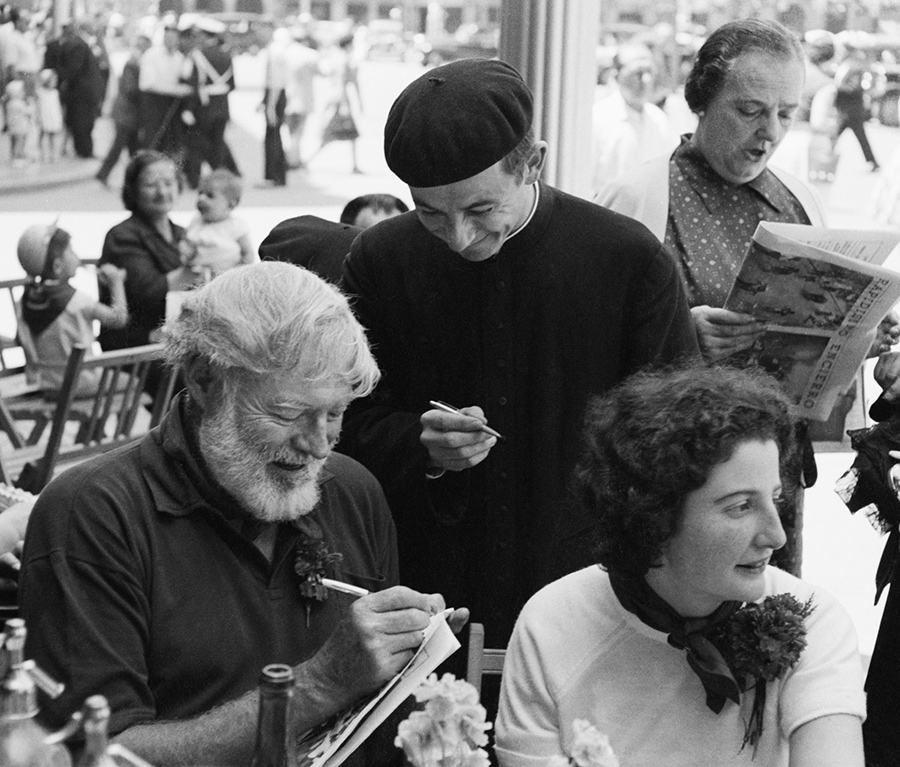
He treasured with fervor the ajoarriero recipe and was characterized by being a man of habit and always returning to his favorite establishments. Some of them are still open today: the bar Txoko, the Hotel La Perla, the Café Iruña, all in the central Plaza del Castillo, and the Yoldi Hotel.
The Pamplona City Council paid tribute to Ernest Hemingway on July 6, 1968, with the unveiling of a monument in the promenade that bears his name, next to the Plaza de Toros, an event attended by his last wife, Mary Welsh. The monument, which is a work by Luis Sanguino, has the following inscription on its base: “To Ernest Hemingway, Winner of the Nobel Prize for Literature, friend of this city and lover of its fiestas, who knew how to discover and spread. The City of Pamplona, San Fermin, 1968”.
The festival explained by the people
Here you can see a compilation of videos recorded during the Covid-19 pandemic in the year 2021 in which different people explain what the Sanfermines are, what values they embody and bring you a little closer to that which cannot be fully explained and which is lived in our city.
Each video corresponds to a step of what people from Pamplona call “la escalera de San Fermín”, a tradition based on the popular chant that goes like this:
“1 de enero, 2 de febrero, 3 de marzo, 4 de abril, 5 de mayo, 6 de junio, 7 de julio San Fermín. A Pamplona hemos de ir…”
and that represents a popular countdown that shows how the festival is alive and present in Pamplona beyond its 9 days of celebration.
